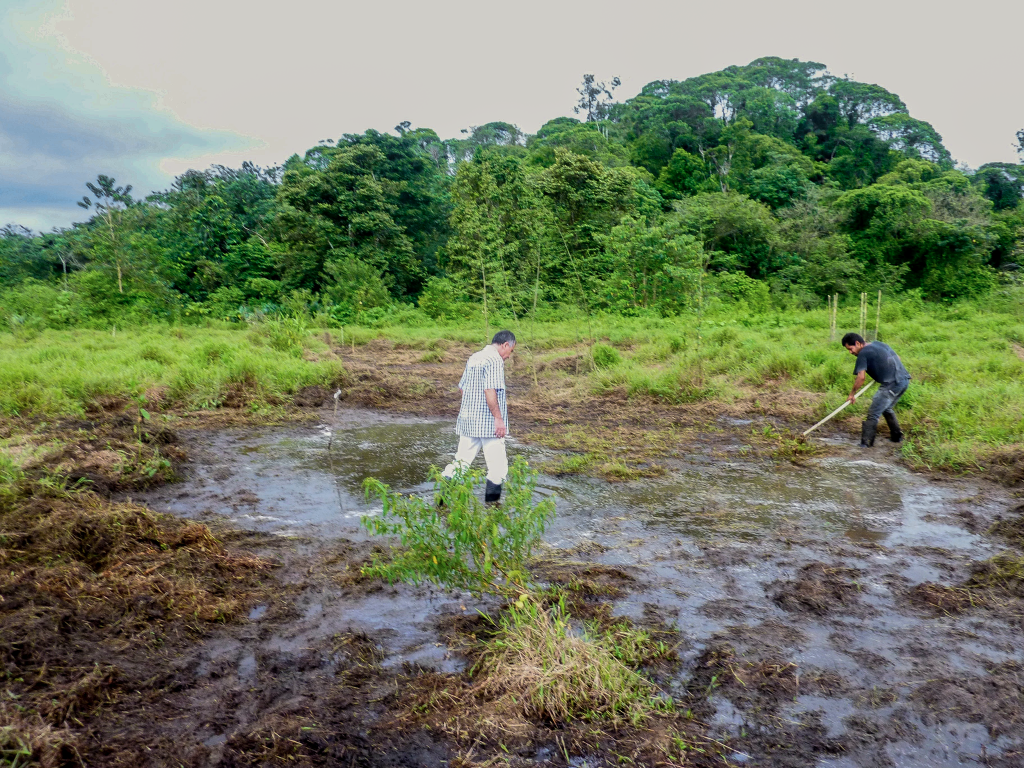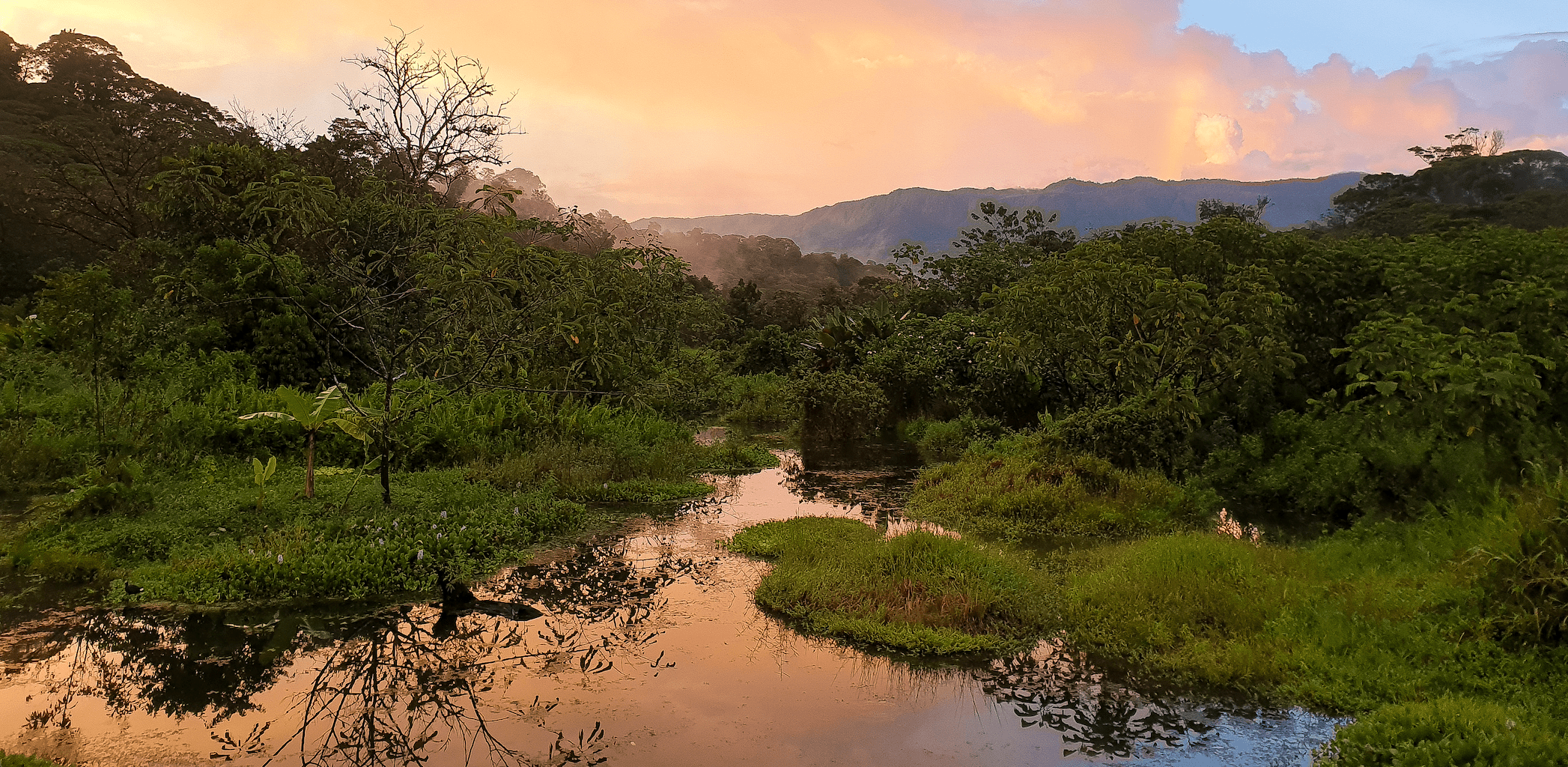In 2016, I came to Costa Rica in search of a land challenged by the methods of human activity. My goal was to restore it and create as many habitats for animals as possible while producing enough food for ourselves to become largely self-sufficient.
I found this land in the South-West of the country: an unproductive swamp, toxic from decades of industrial rice cultivation. When rice would not grow anymore, it was compacted by cattle herds. Apart from these challenges, phosphorus levels were concerningly low and erosion was rampant. A perfect starting point.

The first year was exclusively dedicated to observation, analysis and planning. I observed the sun, the wind, rainfall and micro climates throughout the year, analysed the soil and water on many different spots, and drew maps with geodesic lines. In the dry season, when the groundwater was low, my co-workers and I walked the swamp with bamboo sticks and placed them wherever the groundwater reached the surface, asking nature for guidance on where to dig the wildlife ponds.
We then went on to develop a comprehensive plan, keeping in mind that nature’s strategy is working in cycles and that these cycles must be interconnected into a network of mutual benefit. In permaculture this is achieved by binding each element into a regenerative cycle, assigning at least two functions to every element and provide at least one backup for each.
We started with digging a series of wildlife ponds. The excavated earth was piled up in between those ponds resulting in areas just high and dry enough for a variety of swamp trees. This way we were able to reforest without draining the land. In addition, these ponds now provide habitats for a large variety of animals that had not been here before, such as the boat-billed heron, green ibis, kingfishers and many other birds, as well as amphibians, reptiles, fish and many more.
Next we focussed on the restoration of the soil with several interconnected strategies: microorganisms, the Mexican sunflower (Tithonia diversifolia), nitrogen-fixing ‘pioneers’ and weeds.
The microorganisms are the ‘cooks’ for the plants, transforming organic material into plant-available foods. Thus, the more microorganisms a soil contains, the richer it is. We breed them through hot compost, multiply them with compost tea and protect them with biochar.
Apart from microorganisms, we planted thousands of Mexican sunflowers, a fast-growing shrub that not only fixes nitrogen from the air but also draws phosphorus from rocks in the depth of the soil. In addition, we intersperse the reforestation with a large variety and number of short-lived nitrogen-fixing ‘pioneers’, that prepare the soil for the more slowly growing and delicate trees.
And finally, we make use of the so called ‘weeds’. Weeds grow where other plants can’t and draw exactly those nutrients into their stems and leaves that the other plants can’t access. By regularly ‘chopping and dropping’ them they restore the soil and prepare it for the more demanding trees. Once the canopy closes the ‘weeds’ will have done their job and are shaded out.
The combination of all these strategies led to a minimum loss of young trees, not more than 3% on our land, whereas 10% to 15% are not rare in this area. Animals are returning by the scores. The rare boatbilled heron is breeding here already for the fourth season, a whole family of river otters and even the greater grison (the rarest mammal in Costa Rica) are more and more frequent sightings on our land. Also our camera traps show a steadily increasing number of wildlife: at the last check, we found beside many other animals ozelot, puma and jaguarundi – clear signs that our habitats are recovering.
.





